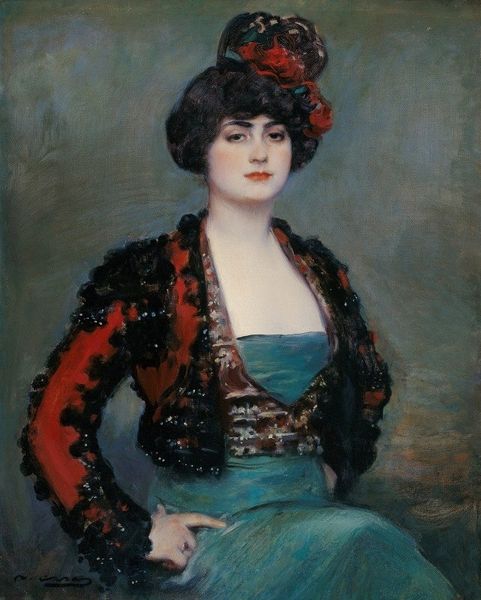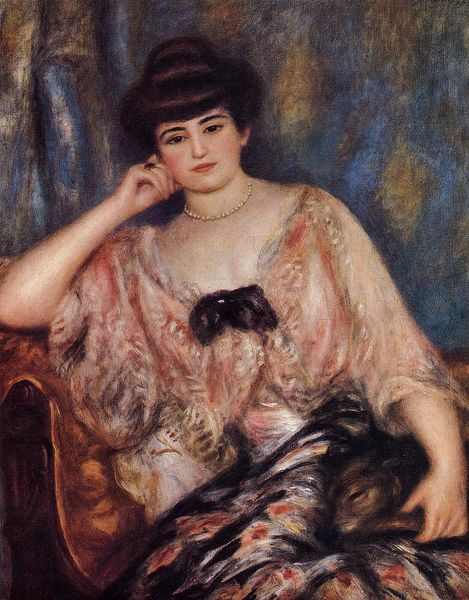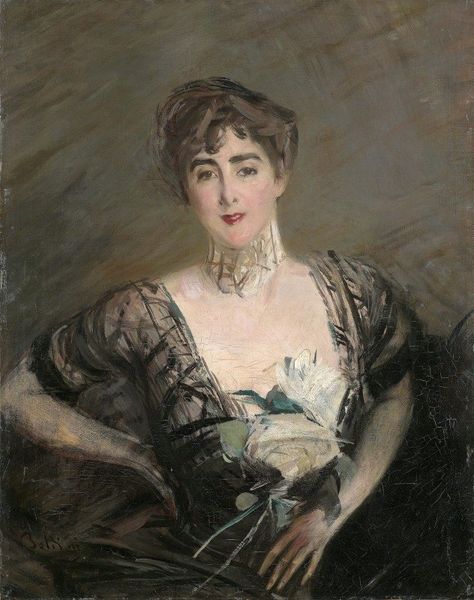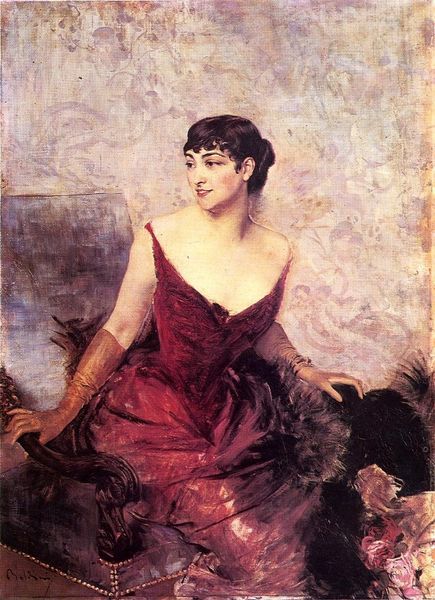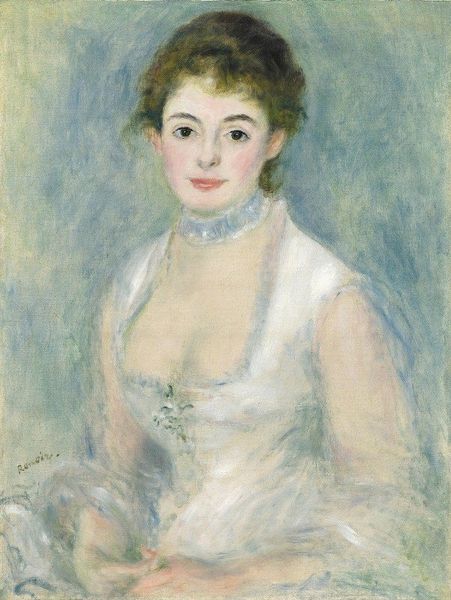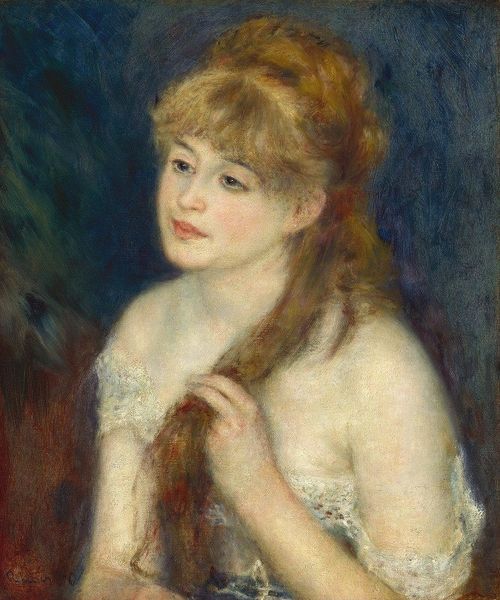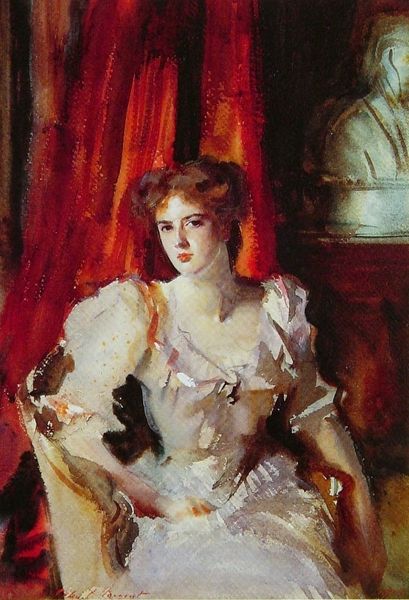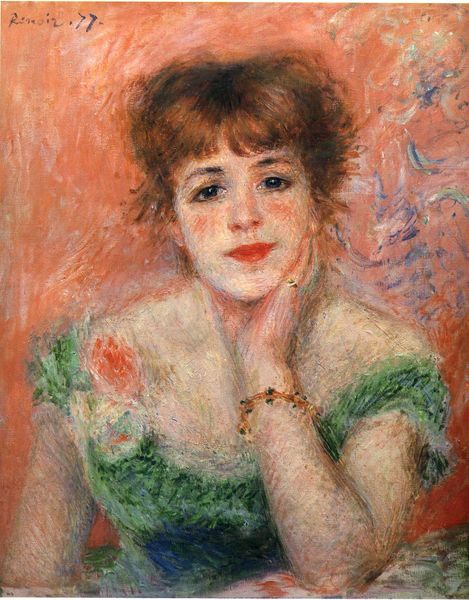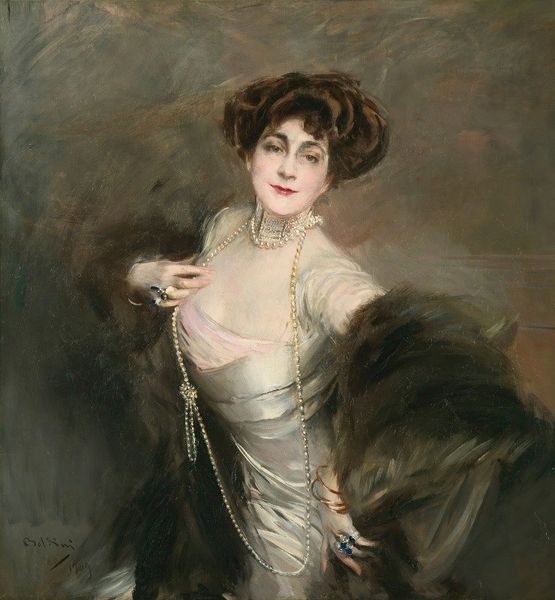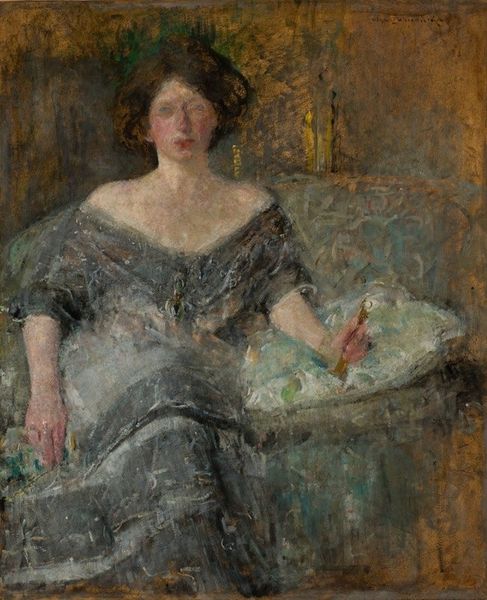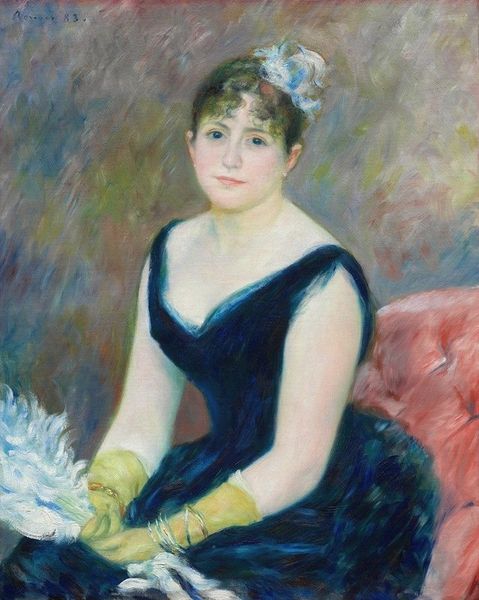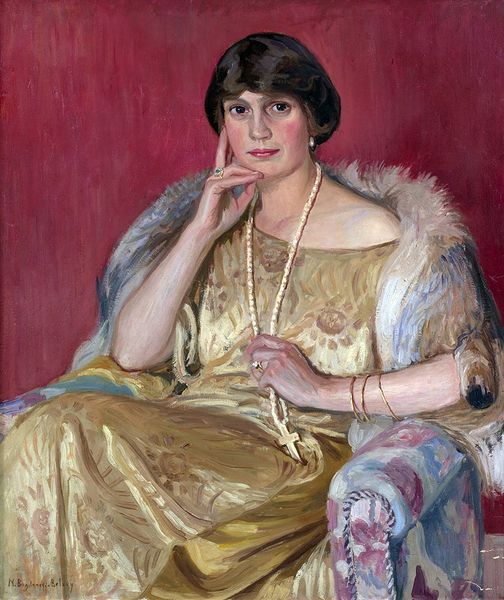
Copyright: Public domain
Curator: Let’s spend a moment examining Pierre-Auguste Renoir’s "Portrait of the Countess Pourtalès" from 1877, an oil-on-canvas piece capturing a woman of Parisian society. Editor: It immediately strikes me as intensely intimate. The rich reds in the background, framing the Countess almost as if she’s emerging from a private space, set an immediate tone. Curator: Indeed. The application of paint itself is fascinating. Look closely, and you’ll notice the dress—it's less about rendering accurate fabric, and more about conveying the *impression* of lace. Think about the skilled lacemakers who toiled to create textiles for the elite; Renoir's method acknowledges their meticulous work even as he abstracts it. Editor: And the rose, pinned so carefully at her breast… that floral symbol whispers of Venus and suggests she is a beautiful object of love and desire. Her folded hands speak volumes. Perhaps it alludes to her role in a particular aristocratic lineage. Curator: I think it's also interesting to examine how this portrait intersects with the wider world of Parisian fashion at the time. This gown must have been incredibly costly, showing how consumption shapes identity. Renoir gives us a sense of what the Countess Pourtalès *possesses*, not simply who she *is.* Editor: Beyond surface appearances, those bracelets gleam golden, as the symbols of wealth but maybe also of bondage: women were shackled by expectation in their own homes at that time. Curator: I agree that Renoir, intentionally or otherwise, highlights societal structures and expectations, especially for women of a certain class during the Impressionist period. Editor: And the painting succeeds in telling us about this. It hints at coded desires of 19th-century Parisian life without ever actually confirming their nature, giving that smile its allure. Curator: Ultimately, examining the artwork brings those questions back to the role and power of materials themselves, even as they try to describe less tangible, more complicated aspects of culture. Editor: It brings those elements together as though memory itself: like that beautiful rose, Renoir suggests even ephemeral desires find a form that we can reflect upon together through images.
Comments
No comments
Be the first to comment and join the conversation on the ultimate creative platform.
